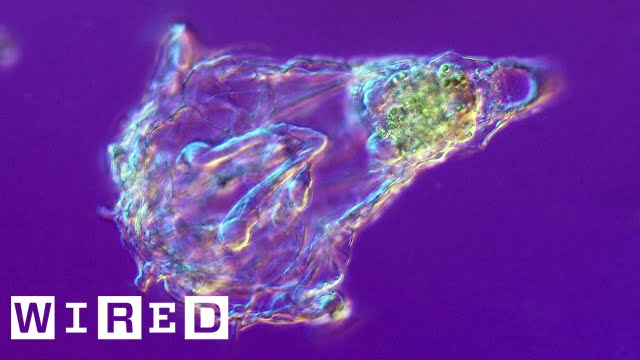AI Space Factory: Creating Sustainable Structures on Mars through 3D Printing Technology
Summary
AI Space Factory is using 3D printing technology to create sustainable structures on Mars with materials found on the planet’s surface. The technology uses a mobile, large-scale 3D printer that can function in extremely harsh conditions. The process involves creating a structure layer by layer from raw, processed materials, which can take up to a month on Mars. Despite the challenges, AI Space Factory sees 3D printed architecture as critical to meeting the growing population’s demand and emphasizes the urgency of adopting this sustainable technology.
Table of Contents
- The Technology behind AI Space Factory on Mars
- How is the 3D Printing Technology Beneficial for the Environment?
- Challenges Faced while Incorporating 3D Printing Technology on Mars?
- Success of Terra Project and Interest of Other Developers
- The Future of 3D Printed Architecture
Introduction
As the world’s population continues to grow, so does its demand for resources, supporting infrastructures, and energy. The construction industry is one of the leading contributors to greenhouse gas emissions, and traditional building practices are unsustainable due to the high costs of materials, energy consumption, and waste production. Therefore, adopting sustainable practices and technologies is more important than ever to limit the impact on natural resources and the environment.
In this blog article, we explore the breakthrough technology of AI Space factory, which seeks to solve these problems by using 3D printing technology to create structures on Mars from materials found there. We’ll discuss the benefits of this technology for the environment and examine the challenges the team faces while incorporating 3D printing technology on Mars.
Q&A
The Technology behind AI Space Factory on Mars
Q: What technology is AI Space Factory using to construct buildings on Mars?
A: AI Space Factory is using 3D printing technology to construct buildings on Mars. They developed a mobile, large-scale 3D printer specifically designed to operate in extreme conditions on the planet. Furthermore, they have created specialized building materials from the planet’s raw materials, making it 95% more efficient than other construction methods that rely on imported materials.
Q: How does AI Space Factory’s 3D printer work on Mars?
A: The 3D printer works in a similar way to a desktop printer, but rather than ink, it uses building materials made of Martian dust. The process involves the 3D printer creating a structure layer by layer until the entire building is complete. However, due to the planet’s harsh environment, the process takes significantly longer than it would on Earth.
How is the 3D Printing Technology Beneficial for the Environment?
Q: What are the benefits of using AI Space Factory’s technology for the environment?
A: One of the significant benefits of using AI Space Factory’s 3D printing technology is that it uses materials found on Mars, reducing the need to transport building materials from Earth, which is expensive and environmentally damaging. Additionally, the use of natural materials reduces the energy required for transportation and the extraction of raw materials. AI Space Factory also aims to use recycled materials as much as possible, making the technology a sustainable option for building infrastructures.
Q: How does 3D printing technology reduce waste production?
A: 3D printing technology is unique because it only uses the necessary amount of materials to create the structure. Other building methods generally produce a lot of waste, including off-cuts of materials, which people inevitably discard. But with 3D printing technology, there’s significantly less waste produced in the construction process.
Challenges Faced while Incorporating 3D Printing Technology on Mars
Q: Why does the construction process on Mars take longer than on Earth?
A: Construction on Mars takes longer than on Earth because of the harsh environment, temperature fluctuations, and peculiarities of the Martian atmosphere. Due to the planet’s thin atmosphere, the temperature can fluctuate drastically during the day and night cycle, making it difficult for the 3D printing process to operate effectively. Additionally, unpredictable weather conditions on the planet often cause delays.
Q: What are some challenges faced while incorporating 3D printing technology on Mars?
A: One of the challenges is sourcing the materials to make the building blocks. Martian dust is abundant, but it is complex to ensure its purity and mix it with other materials for structural stability. The 3D printer itself is also subject to the harsh environment, making it unsuitable for long-term use, and requires constant maintenance. Nonetheless, AI Space Factory has been working to resolve these challenges through experimentation, innovation and collaboration.
Success of Terra Project and Interest of Other Developers
Q: How has the response to the Terra project been?
A: The response to the Terra project has been positive, with many people considering 3D printed architecture as a potential solution to sustainable urbanization. AI Space Factory worked with NASA to develop the project and won first place in NASA’s 3D Printed Habitat Challenge. This project has garnered significant interest from other developers who are keen to push the boundaries of the technology and take sustainable building methods to new heights.
Q: Are other companies currently developing this technology?
A: Yes, various companies worldwide are currently developing 3D printing technology for construction purposes. However, 3D printed architecture is still in its early stages, and much research is still needed to make the technology more efficient.
The Future of 3D Printed Architecture
Q: What does the future hold for 3D printed architecture?
A: The future of 3D printed architecture is promising, although the technology is still in its early stages. The use of 3D printing technology for creating buildings on Earth is poised to reduce the carbon footprint of the construction industry significantly. The focus for AI Space factory is primarily on developing sustainable construction methods. The use of 3D printed technologies is seen as a necessary technology to meet the demand of increasing populations in a sustainable way.
Q: What technologies should we expect in the near future to drive 3D printed architecture?
A: In the near term, we can expect innovations in materials science that will drive 3D printed architecture. Entirely new categories of construction materials, such as bio-printed organics (like mushroom-based building blocks) are currently being researched. Also, advances in robotic technologies and automation will support the growth and scalability of 3D printed construction.
Conclusion
AI Space Factory is an exciting and promising development in the field of architecture and construction. The company’s innovative use of 3D printing technology and the use of renewable materials sourced from the Martian surface propose a sustainable solution to traditional archaic buildings. The construction industry is a leading contributor to climate change, and sustainable technologies like this are vital to mitigate the impact on the environment. While there are still challenges to be addressed with the use of 3D printing technology, its potential benefits cannot be ignored.






